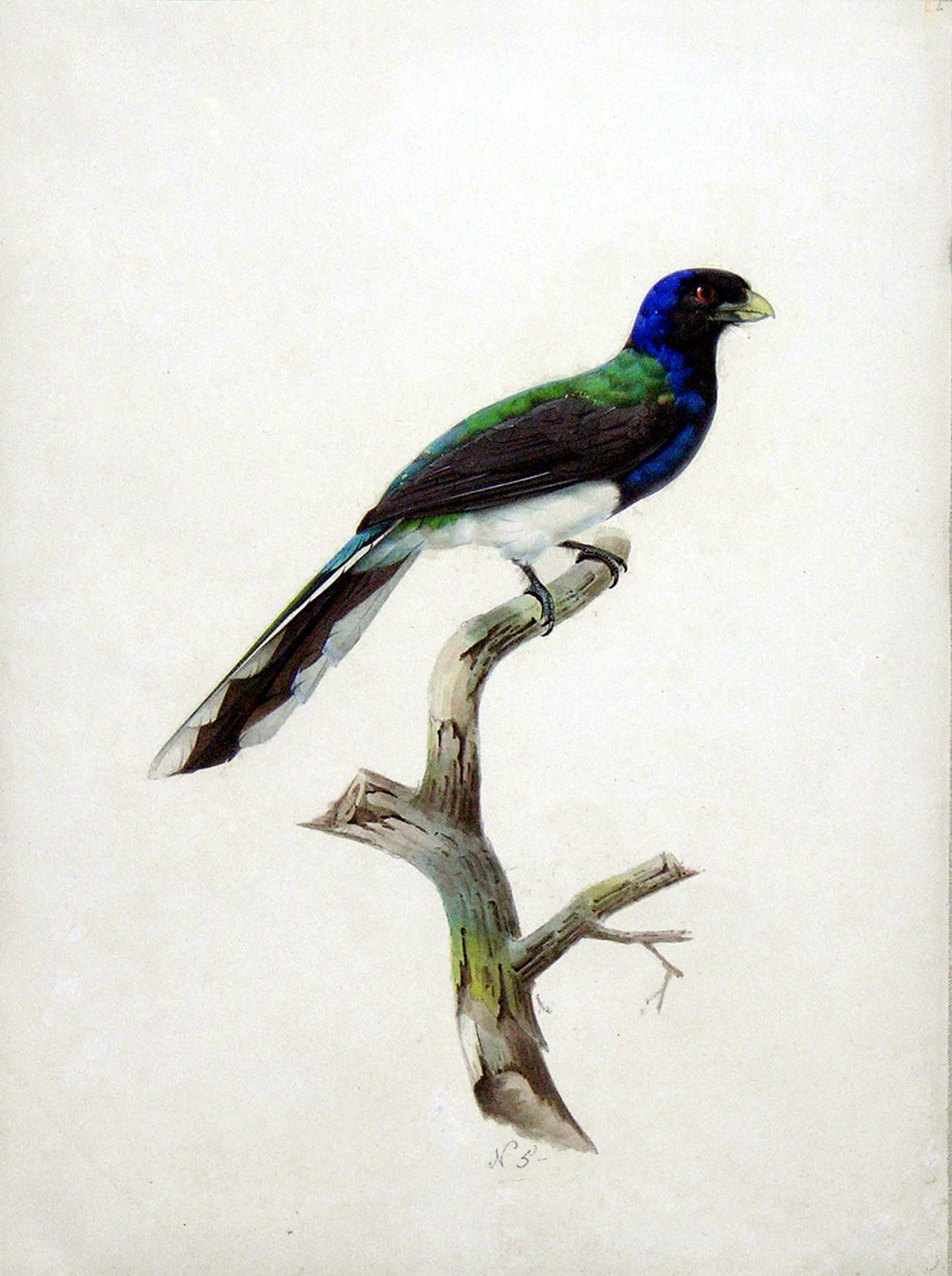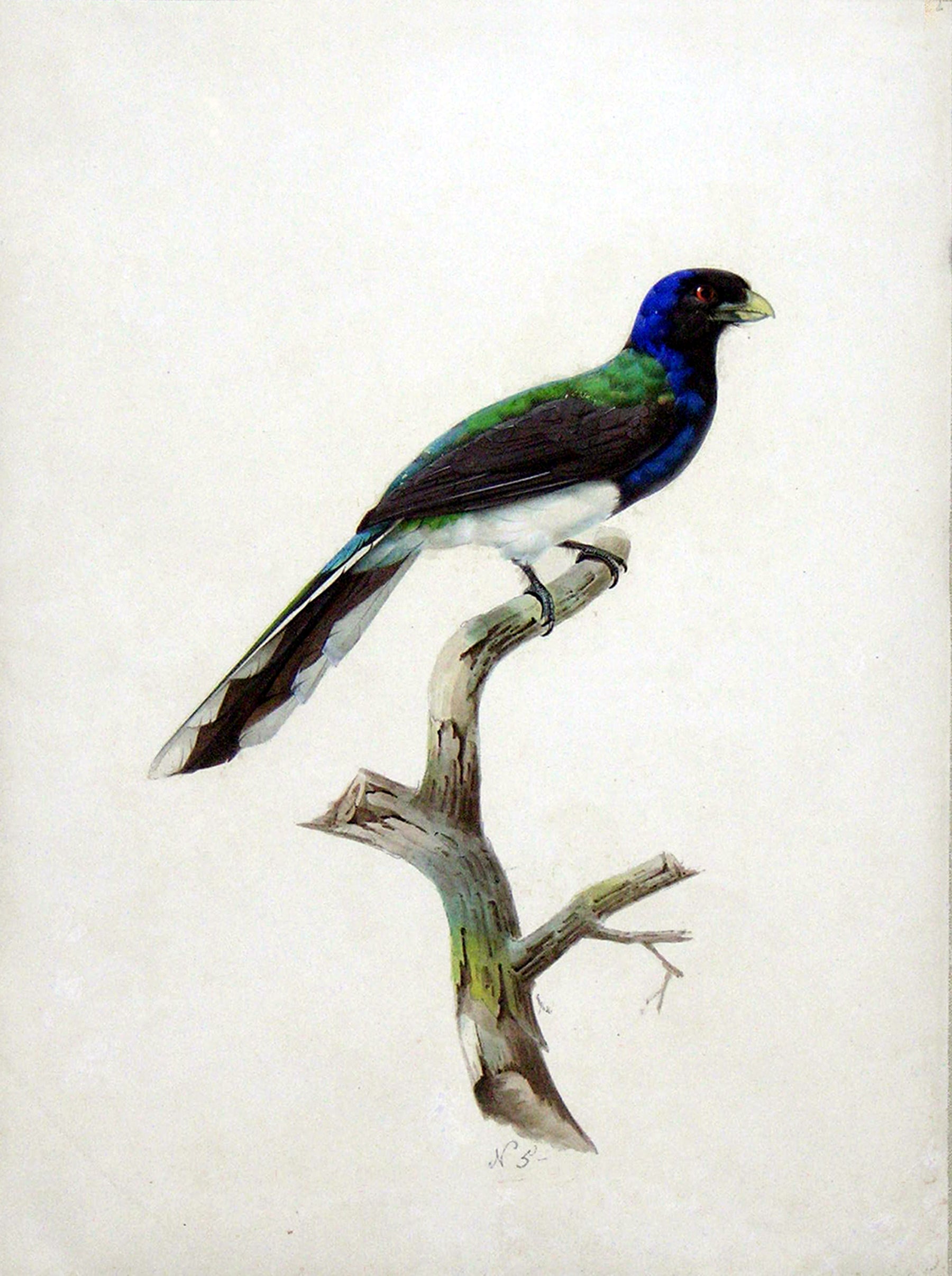AUGUSTE PELLETIER (FRENCH, FL.1800-1847) White-tailed Trogon
AUGUSTE PELLETIER (FRENCH, FL.1800-1847) White-tailed Trogon
Couldn't load pickup availability
AUGUSTE PELLETIER (FRENCH, FL.1800-1847)
White-tailed Trogon
Preparatory drawing for Francois Levaillant’s Histoire naturelle des promerops... Plate 5
Watercolor and gouache over gum arabic
Signed: Auguste [Pelletier]
ca. 1822
Paper size: 20 3/4 x 15 in Frame size: 31 x 24 1/4 in
AUGUSTE PELLETIER (FRENCH, FL.1800-1847)
White-tailed Trogon
Preparatory drawing for Francois Levaillant’s Histoire naturelle des promerops... Plate 5
Watercolor and gouache over gum arabic
Signed: Auguste [Pelletier] ca. 1822
Paper size: 20 3/4 x 15 in Frame size: 31 x 24 1/4 in
Levaillant wrote of this bird, “There is also found in South America, and particularly in Cayenne and Surinam, a species of white-bellied couroucou which Brisson had already given as a distinct species, under the name of the green couroucou with white belly, but which Buffon, as usual, made a variety of age of the yellow-bellied couroucou. However, as we have made known the female and the young of this last species, there can be no doubt that this white-bellied couroucou or Albanian couroucou does not form a distinct and separate species from the other.
The Albanian couroucou is quite rare in collections, and therefore appears not to inhabit the surroundings of the colony of Cayenne; for, without which, it is probable that it would be found more commonly than it is found in the consignments of birds which reach us from this country, and in which I have seen so far only five individuals
which all gave me the characteristics of adult birds, resembling each other, and two young ones. The first, which are probably males, have a black face, the head, neck, and breast of a beautiful purplish blue, which, depending on the incidence of light, takes on green or purplish reflections; the back, the rump, the coverts of the upper tail and
the smaller ones of the upper wings, are of a rich green changing to blue or violet, depending on the aspect. The larger coverts of the upper wings and the scapulars are black. The under part of the body, from the breast, including the under-coverts of the tail, are pure white; the flanks, the feathers of the thighs, and all those which cover
the tarsi, are of a washed black, as are all the under-coverts of the wings. The wing-feathers are black, excepting a little white which is seen on the outer edges of the first. The six middle tail-feathers are above in all their visible parts of the same bluish green of the back; the three following on each side, which are tiered, have white at their
extremity, and are black otherwise, but this white occupies less space as it approaches the middle of the tail. The bill and feet are of a leaden grey, and the reverse of the wings and tail black. We do not know the female, which probably resembles the young, which have the head, neck, chest and flanks, as well as the back, rump, upper tail coverts and all those above, of the wings, of a reddish grey-brown.
The belly and the under tail coverts of a white soiled with reddish, and the wing feathers, as well as those of the tail, of a very washed black; but the three outermost feathers on each side of the latter are marked with reddish white at their point; and finally the beak, which does not yet have any serration, is of a washed brown yellowing towards its edges. The fingers and nails are yellowish. This species appears more common in Surinam than in Cayenne because there are few collections in Holland where it is not seen, while it is very rare in those of France.”



